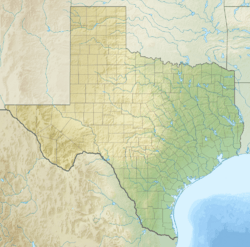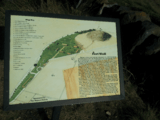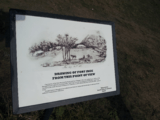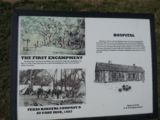Fort Inge facts for kids
Quick facts for kids |
|
|
Fort Inge Archeological Site
|
|
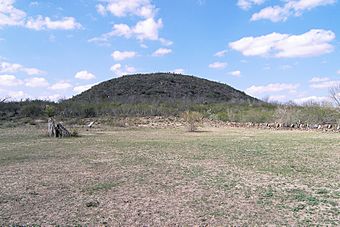
The site of Fort Inge archeological site with Mount Inge in the background
|
|
| Location | FM 140 SE of Uvalde, Texas |
|---|---|
| Area | 39 acres (16 ha) |
| Built | 1849 |
| NRHP reference No. | 85002298 |
| Added to NRHP | September 12, 1985 |
Fort Inge was an important frontier fort in Uvalde County, Texas, United States. It helped protect travelers and mail routes in the old West.
History of Fort Inge
Fort Inge started as a military camp called Camp Leona on March 13, 1849. It was used by soldiers off and on until March 19, 1869. The fort's main job was to protect the southern overland mail route. This route, called the San Antonio-El Paso Road, was important for sending letters and supplies. Soldiers at the fort protected it from attacks by some Native American groups.
The camp was later renamed Fort Inge. This was done to honor Lieutenant Zebulon M. P. Inge. He was an officer from West Point who died during the Mexican–American War.
Life at the Fort
Fort Inge had two wooden barracks where soldiers lived. These buildings had roofs made of thatch, which is dried plant material. There was also a large building made of limestone. This building was first used as a place to store food and supplies (a commissary). Later, it became a hospital for sick or injured soldiers.
The buildings at Fort Inge were often not big enough for all the soldiers stationed there. This was probably because the Army never planned for it to be a permanent fort. It was first set up in 1849 but then left empty in the spring of 1851. It was used again that same summer and stayed open until 1855, when it was abandoned once more. The fort was reoccupied a third time in 1856. However, it was abandoned again in 1861 when Confederate States Army troops took it over during the Civil War. After the war, in 1865, the 4th Wisconsin Cavalry briefly used the fort.
After the Army
The United States Army used Fort Inge again until March 19, 1869. At that time, the soldiers (the garrison) were moved to Fort McKavett. The army even took building materials from Fort Inge to help build additions to nearby Fort Clark.
After the Army left, Fort Inge was used by the Texas Rangers. They used it as a camp until 1884.
Around the time of the Civil War, a stone wall was built around three sides of the fort. This wall was taken apart in 1874. The stones were then used to build a dam on the Leona River. However, in 1984, the wall was rebuilt along its original lines.
Fort Inge Park
In 1961, the site of Fort Inge became the Fort Inge Historical Site County Park. It was added to the National Register of Historic Places on September 12, 1985. This means it's recognized as an important historical place.
The park is located next to the Leona River. A cool feature of the site is Mount Inge, which is about 140-foot (43 m) tall. Mount Inge is actually what's left of an old, extinct volcano!
Gallery


